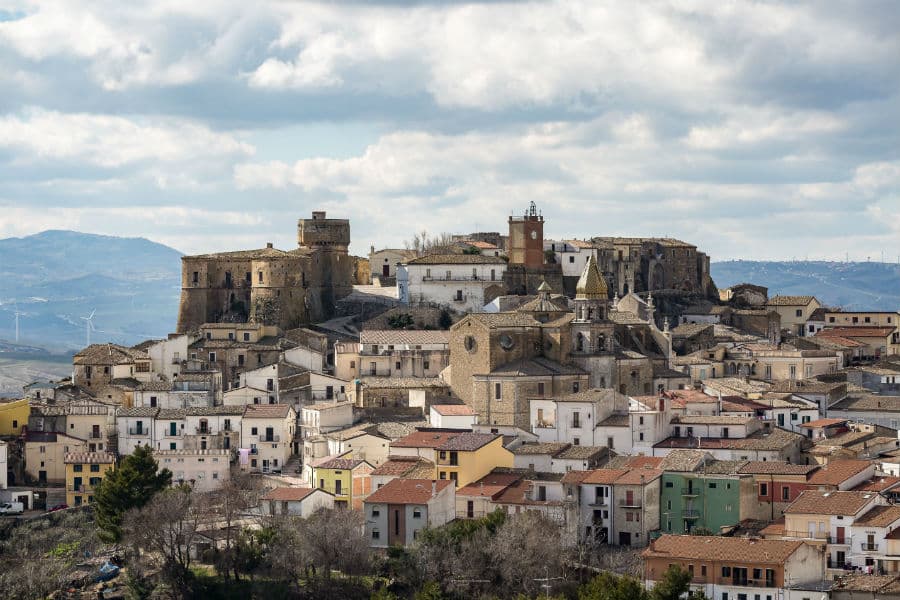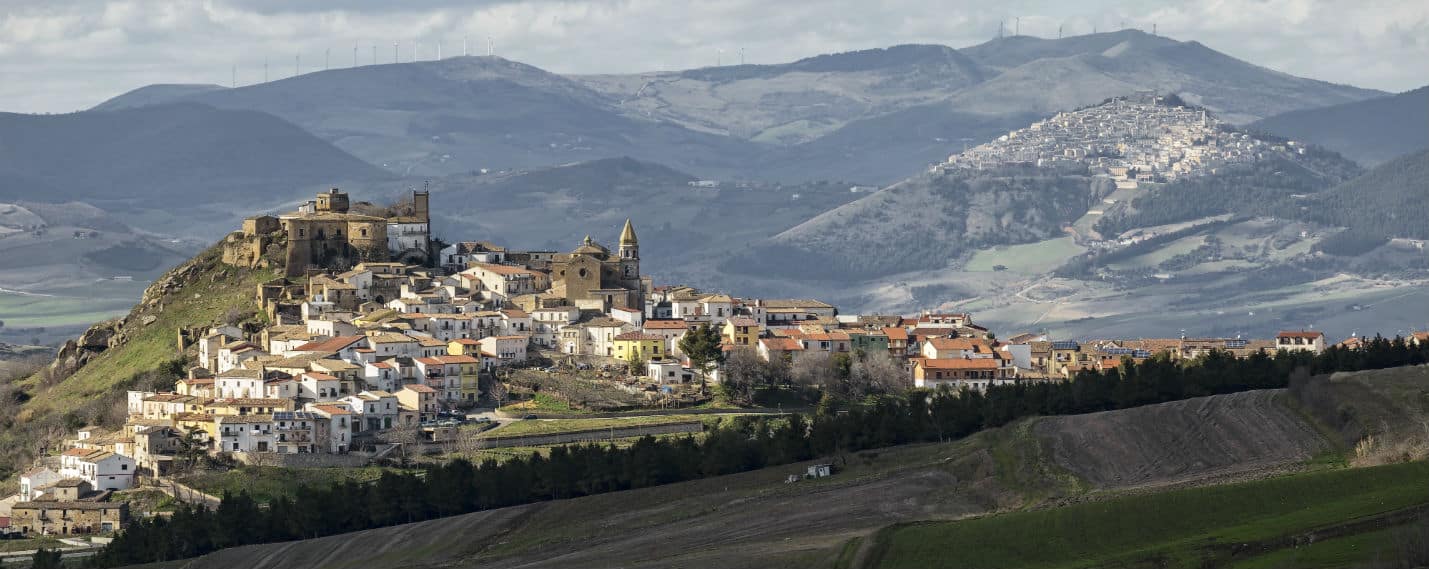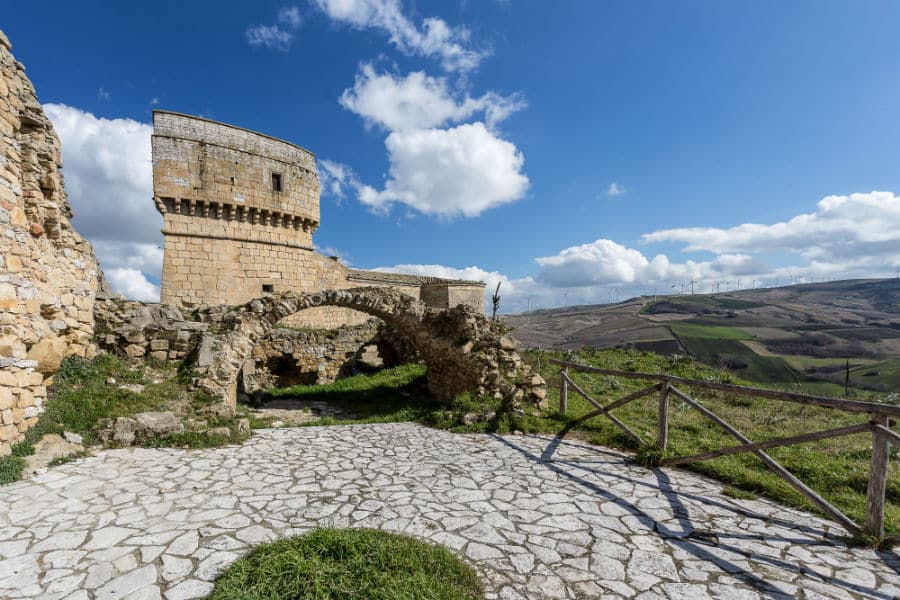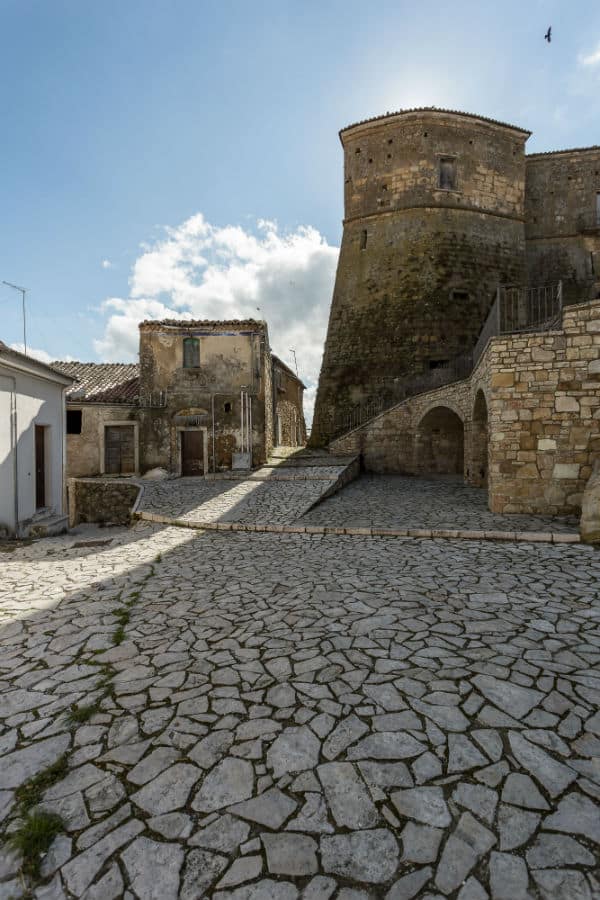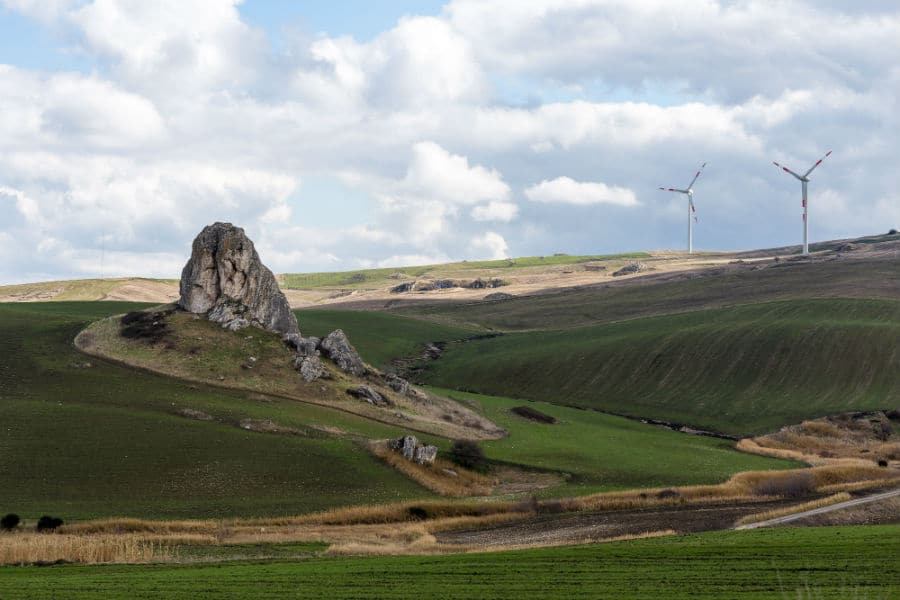The placename you originate from the rocca di Sant'Antimo, built in the X century. It was said of Sant'Antimo in honor of the illustrious martyr of Nicodemia of III century Christian. Contended for the strategic position by the Byzantines and the Lombards (VI century), the village developed around a fort built by the Normans in 1083 destroyed by the earthquake of 1456. The medieval village in the most high has the parish church dedicated to the assumption of the Blessed Virgin Mary, erected between 1754 and 1768 (date of consecration) on a design by the engineer Giovanni Mancarelli of Barletta, side has the Castle of notable architectural interest, which was build by Ladislao II D'Aquino, owner of the feud of Rocchetta from 1501, perhaps on the design of the famous architect Francesco di Giorgio Martini.
Interesting is the Parish Church of the Assunta: built in 1754 in baroque style, has a beautiful facade and a high bell tower from the particular coronomento. The interior has three naves and a Latin cross. Near the parish of the Assumption is located the church of the Madonna of the Well. The Tower to almond is inserted into one of the vertices of the triangle of the castle. From the construction of the new castle the village was called Rocchetta Sant'Antonio, to distinguish the second building from the first named Sant'Antimo.
Rocchetta surprises the visitor from the first impact with its medieval buildings and Renaissance palaces, squares, narrow streets of the historic center, with the inmitabile prospective game of small houses, all elements that help to create an atmosphere of collection and intense harmony. Every piazza, every street and every glimpse testify the ancient history of the country: from Norman foundation traceable in the highest part of the city center, to the entire historic center in a grid of streets, all directed toward the ancient castle.
All part in 984 when the feudatory Roberto del Torpo took possession of the territories of Rocchetta and here he made to erect a fortress dominating the surrounding territory. The construction, of which we can still admire the ruins, was a square shape and is surrounded by a ring of walls. After a long feudal competition for supremacy in the territory rocchettano, the land took to extend to the left and right on the slope of the original hill first to arise outside the old city walls is surely the beautiful castle erected by Ladislao II D'Aquino in 1507 A.D. The imposing building has as a characteristic that distinguishes the main tower of the ogival form, a strange shape that recalls the bow of a ship. It is the castle one of the most beautiful in the area. Erected more than for defense for pure opulence, and still retains a singular charm. Nice to see is the Sggio of the sixteenth century which is located in front of the Cathedral, returned to its ancient splendour in a recent restorations by the Cooperativa Communio. The true wealth of Rocchetta are the churches. The most impressive is the Mother Church, dedicated to the Assumption of the Blessed Virgin Mary. Erected in 1754 by will of Monsignor D'Amato. Inside you can admire the marvelous multicolored stuccos depicting the four evangelists and other bibbliche scenes, the majestic altars of Cimafonte and many paintings and works of art among which the beautiful cinquecento Table of Madonna del Cardellino of Giaquinto. The most ancient of the church is instead the beautiful sixteenth century bell tower built for intention of Bishop Pedoca. The visitor will certainly be fascinated by the bright wooden choir behind the high altar.
f particular importance are the statues of the Patron Saint of the city, S. Antonio Abate, of Our Lady of the Rosary, San Sebastiano and San Vito, Our Lady of Sorrows and the Ecce Homo Brudaglio of other Churches of Rocchetta are La Maddalena, S. Maria delle Grazie, S. Joseph, S. John and the two beautiful Marian shrines. An ancient monastery dedicated to S. Maria in Giuncarico, known as "l'Annunziata" and the Madonna del Pozzo Patroness of the country which is located three kilometers from the inhabited center. Among monuments which enrich this town, particularly valuable natural, the beautiful "preta longa". A great rock that mark from the ground and is the symbolic port of Rocchetta for travellers who are from Candela. Important characteristic of Rocchetta is the wealth of water.
Environmental Heritage for the country are the countless fountains at the mouth from which all year gushes water from the unique taste and fresh. The names of some fountains are: "Fontana d'uva","Fontana Nuova", "fontana r'morc", "fontana San Lorenzo", "fontana S. Martino", and the "pescarella", famous in the area for its beneficial effects and for the sweet flavor. The nature finds its maximum expression in the municipal forest where you can admire a great variety of plants and shrubs secular, in addition to a composite fauna including hawks, wild boars, foxes, hares, turtles, Ricci and owls. One of the environmental resources of Rocchetta is without a doubt the wind, and since a few years some companies have decided to exploit it by building a wind power plant that uses wind energy to produce electricity.


